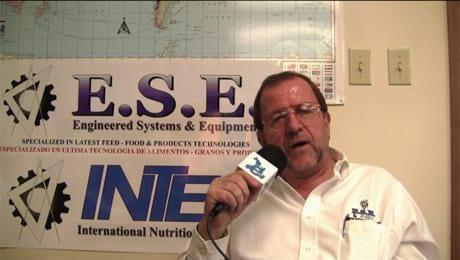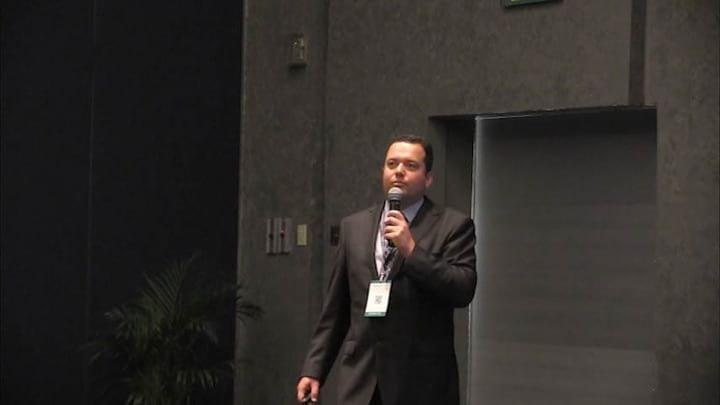Extrusion Cooking Systems for Feed Production. Joe Kearns (Wenger)
Dear Jayaraj, There are a number of feed ingredients which are important, all selected based on the nutrition of the fish being fed. For floating starch is needed at about 20% to insure floating. Feed ingredients need to be ground to a minimum of 1/3 the die hole size. I would think the finer the better for small fish down to about 200 micron.
Dear Halim,
You are correct, attractants can be beneficial to the first feeding. If the fish are started out when young they will eat the feed more readily throughout their growth cycle.
There are several factor that affect the proper Extrusion and Floating quality-
1. Extrusion Temperature - It vary from 120 degree centigrade to 145 degree centigrade
2. Extrusion Time - vary with extrusion temperature ( 1 to 4 minutes)
3. Particle size of the ingredient - if the particle size is more small effective extrusion within short time.
4. Starch percentage - at least 20% for better floating (100%)
5. Raw Material Quality- Practically we have seen that low fiber content raw material, high floating tendency.


Pre- Pelleting Process in Aquafeed Production Josef Barbi (E.S.E. & Intec)

??? ???? ????
Dear UNKNOWN friend:
I would be happy to interchange information with you but I like to call people by their names and I doubt ?????? is your name. In any case, please identify yourself so everyone can see who is on the other side of the screen. Thanks.
Dear All,
Thanks for all the info provided. Currently we are researching in developing floating and slow sinking feeds for ornamental fishes.
Regards
jayaraj


North American Renderers Association (NARA)


Pre- Pelleting Process in Aquafeed Production Josef Barbi (E.S.E. & Intec)
Mario Miranda Lavarello
Thank you, Mr. Mario.
Can the parameters of a food floating fish feed be obtained on a small extrusion machine like 500 kg/hr. Is it technically viable?
Please educate.
Regards,
I would like to add a few more comments regarding making sinking vs floating fish feed.
1. Floating or sinking pellets are dependent on the formulation. Both the type of starch and inclusion rate of starch will make a shaped fish feed float. Generally, sinking pellets incorporate less starch and higher fat, with post-fat application likely.
2. Additionally, the type of die plate used will help with expansion (for floating) and gelatinization (binding) of the fish feed. For floating fish feed, a longer land length can assist with more expansion, hence, floating characteristics of the pellet. Alternatively, a shorter land length and more back pressure at the die plate can generate sinking characteristics due to less room for expansion. The type of starch used will affect the amount of gelatinization (or cook) of the fish feed. If a high quality starch is used then the sinking pellets will hold together better. Post-extrusion handling is also important to sort fines (especially with small diameter feeds < 2 mm) that may interfere with the ability of the feed to float vs sink.
3. Extrusion is an adaptable technology for generating shaped products, such as fish feed. Small changes in the formulation of the feed can affect pellet characteristics such as binding, size, shape, and sinking/floating. It is important to work with someone that has experience developing different types of fish feeds to match your application. It is possible to produce aquatic feed with small scale production (about 1 ton per hr), which results in a smaller investment in equipment. This also leaves potential to expand by adding more equipment as the business grows.
To summarize, final desired product will influence what type of extruder (single vs twin screw), scale of production, and types of ingredients you will use in your operation. Feel free to reach out if you have any further questions about the use of extrusion for developing fish feed.
Thank you, Joe Kearns, for starting and continuing the discussion on how extrusion can be used to produce high-quality fish feed.
If you are interested in learning more about the extrusion process and how it can be applied to the aquaculture industry, check out this short course in aquaculture hosted at Texas A&M by PERDC (https://perdc.tamu.edu/event/aquaculture-feed-extrusion-nutrition-and-feed-management-short-course/).


North American Renderers Association (NARA)
Nkonge Bbosa, both animal and plant starches can act as a binding agent in the formulation. Higher quality starches, such as high-gluten wheat flour, plant-based cellulose, or even animal plasma products can all serve to improve pellet durability. Do you have a desired length of time after feeding before the pellet loses its durability in mind?
Thanks, Katie Mayo for sharing very important and educational aquatic information. Regards the durability, I aim at attaining between 12 hours and 20 hours.
Thanks.
Loses its durability? Do you mean disintegrates completely in water?
What would the binding agent do exactly? Increase the water stability of the pellet, or the durability, or the hardness, or combination?
Khaled Itani,
I am referring to the aqua-durability, or the ability of the pellet to stay intact once it's been fed in the water. To go a little more in detail, a desirable fish pellet should be durable enough to remain floating and absorb water, but not change its shape (i.e. disintegrate) after being in the water for a couple of hours. This is important because not all fish will eat right away. Also, if a pellet disintegrates in the water before it can be consumed by the fish, it can pollute the water which will have adverse effects on the fish's health.
Different types of starches, such as cereal flours or animal plasma products, or cellulose (i.e. main ingredient of most pellet binders) can act as binders in aqua feed using a cooking process like extrusion. More specifically, starch gelatinization (process of swelling when starches are exposed to heat and water) occurs allowing for the pellet to absorb more water. Generally, the better the starch gelatinization of the pellet, the better the pellet durability.
It is important to note that there are other advantages to using extrusion to process fish feed, such as flexibility to change shape and size of pellet, improved expansion for floating characteristics, better oil absorption for coating, and improved palatability of raw ingredients.


Pre- Pelleting Process in Aquafeed Production Josef Barbi (E.S.E. & Intec)

Dear Joe,
Hope you are doing great.
Thank you for opening a very interesting topic.
Can you share some more details on the trials you have performed on the tuna feed production? What was the proximate moisture content in the feeding section before steam and slurry addition and what was calculated moisture content in the barrel (counting the steam and slurry part as well)? Did you use glycerol as the humectant? Was it a semi-moist product (16-18%)? What was the model of the extruder?
Thank you in advance,
Radmilo.
Radmilo Colovic
All is good. The tuna feeds worked on while at Wenger were of the semi moist style. 3 feed streams, one of standard feed ingredients at 11- 12% moisture. The 2nd stream or the ground up pilchards approx. 65% moisture, and the liquid stream of humectants. All by computer control with flow meters etc to get the percent's correct. We were really up in moisture near 40%. 1/2 the formula was ground pilchards of 65% moisture. The Wenger Thermal Twin was used.
On extruded material, on maize gram, we check bulk density & moister what nozzle is the best for this.
shadrack otieno
Just saw this message, noted you extruder corn or maize grains, you check bulk density and moisture levels.
I need to ask you to clarify what you mean by what nozzle is best for this? Define nozzle. I can make an assumption as in die opening but I will allow you to clarify first.
Joe Kearns.
Myself involved in Asian seabass Aquaculture. As you are well aware that, weaning of fry stage is become challenging in marine finfish particularly Asian Seabass. The stability of feed varies from freshwater, brackishwater and then marine. We prefer to have slow sinking type of extruded feed with high protein composition. Whether cooking process during extrusion for slow sinking type of feed can meet the requirements while rearing in various physical water parameters.


North American Renderers Association (NARA)


















.jpg&w=3840&q=75)
.jpg&w=3840&q=75)




